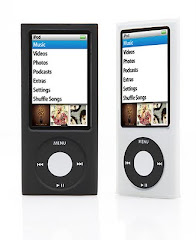By Bruce Fife, N.D.
©2001 Reprinted with permission of the author.
One of the many plagues of modern society is diabetes …
[ Why Coconut Oil Is Said To Be The Healthiest Oil On Earth ]
The incidence of diabetes has risen from almost nothing a century ago to a level of major concern today. It is now the sixth biggest killer in America. Diabetes not only can cause death but can lead to kidney disease, heart disease, high blood pressure, stroke, cataracts, nerve damage, hearing loss, and blindness. It is estimated that 45 percent of the population is at risk of developing diabetes.
What is Diabetes?
Diabetes is all about sugar – the sugar in our bodies known as blood sugar or blood glucose. Every cell in our bodies must have a constant source of glucose in order to fuel metabolism. Our cells use glucose to power processes such as growth and repair. When we eat a meal the digestive system converts much of our food into glucose which is released into the bloodstream. The hormone insulin, which is secreted by the pancreas gland, moves glucose from the blood and funnels it into the cells so it can be used as fuel. If the cells are unable to get adequate amounts of glucose they can literally starve to death. As they do, tissues and organs begin to degenerate. This is what happens in diabetes.
There are two major forms of diabetes: Type I and Type II. Type I, also referred to as insulin-dependent or juvenile diabetes, usually begins in childhood and results from the inability of the pancreas to make adequate amounts of insulin. Type II diabetes is known as non-insulin-dependent or adult-onset diabetes because it usually appears in older adults. In Type II diabetes the pancreas may secrete a normal amount of insulin but the cells are unable to absorb it. Insulin acts like a key to a lock. It goes to the cells and unlocks the door to allow glucose to enter. If the lock is made of cheap materials and breaks, the key no longer works and the door remains locked. This is essentially what happens with Type II diabetes. Insulin is generally available but it can no longer unlock the door because the lock is broken. In both types of diabetes the level of glucose in the blood is elevated while the cells are deprived.
In Type I the pancreas is incapable of producing enough insulin to adequately shuttle glucose to all the cells in the body. Treatment involves insulin injections one or more times a day along with adherence to a strict low-sugar diet. About 90 percent of diabetics are of Type II and 85 percent of them are overweight. Excess body weight is a very strong risk factor for Type II. Diet plays a key role in both onset of the disease and in its control. The types of foods we eat can either promote or protect us from diabetes.
In the Pacific islands diabetes is unheard of among those people who eat traditional diets. But when they abandon their native foods and adapt Western ways, disease of all types surface. One of these new diseases is diabetes. An interesting example of this has occurred on the island of Nauru in the South Pacific. For centuries the people, subsisted on a diet composed primarily of bananas, yams and coconuts, lived totally free from diabetes. Phosphate deposits discovered on the island brought an influx of wealth and a change in lifestyle. The islanders replaced the coconut and yams they had eaten for centuries with foods made from refined flour, sugar and processed vegetable oils. The result was the emergence of a never before seen disease – diabetes. According to the World Health Organisation, up to one half of the urbanised Nauru population age 30 – 64 are now diabetic.
Doctors have been able to help patients control diabetes by putting them on a low-fat, high-carbohydrate diet. The diet restricts total fat intake to 30 percent or less of calories. Complex carbohydrates such as whole grains and vegetables comprise 50 – 60 percent of calories. Simple carbohydrates such as refined flour and sugar are to be avoided. The reason for this is because simple carbohydrates can put undue strain on the pancreas and quickly raise blood sugar to dangerous levels. The reason for reducing fat as well as sweets is to promote weight loss. Since overweight is of primary concern with diabetes, losing excess weight is a priority. Another reason for the low-fat diet is to reduce risk of heart disease which is a common consequence of diabetes. Probably the best reason for keeping fat to a minimum is that some fats, particularly oxidised fats, not only promote diabetes but may actually cause it.
Researchers have discovered that the over consumption of refined vegetable oils leads to diabetes. As far back as the 1920s Dr. S. Sweeney produced reversible diabetes in all of his medical school students by feeding them a high vegetable oil diet for 48 hours. None of the students had previously been diabetic. More recently researchers have been able to cause test animals to develop diabetes by feeding them diets high in polyunsaturated fat.8,9 Simply restricting fat intake in diabetic animals has shown to reverse Type II diabetes.10,11 Likewise , clinical studies with humans on low fat diets also show reversal of the disease. Many studies have shown low-fat diets to be effective in controlling diabetes.12
The current recommendation is to limit all fats. Monounsaturated fats, such as olive oil, don’t seem to adversely affect diabetes and so are allowed in moderation, but because all fats, including olive oil, are high in calories, they are discouraged. Saturated fat is restricted because it is believed to increase risk of heart disease. The biggest culprit, however, seems to be polyunsaturated oil. 13 Studies have shown that when polyunsaturated fats from the diet are incorporated into cellular structure, the cell’s ability to bind with insulin decreases, thus lowering their ability to get glucose. 14 In other words, the “locks” on the cells which open the door for glucose to enter degrade when too much polyunsaturated oil is consumed in the diet. Insulin is then unable to open the door. Polyunsaturated oils are easily oxidised and damaged by free radicals. Fats of all types, including polyunsaturated oils, are used as building blocks for cell membranes. Oxidised polyunsaturated fats in the cell membrane can adversely affect the cell’s function, including its ability to allow hormones, glucose, and other substances to flow in and out of the cell. Therefore, a diet high in refined polyunsaturated vegetable oils promotes diabetes. A diet low in such oils helps to alleviate symptoms. Because all fats also promote weight gain, it’s best to avoid them as much as possible.
Conclusion
There is one fat that diabetics can eat without fear. That fat is coconut oil. Not only does it not contribute to diabetes, but it helps regulate blood sugar, thus lessening the effects of the disease. The Nauru people consumed large amounts of coconut oil for generations without ever encountering diabetes, but when they abandoned it for other foods and oils the results were disastrous.
As mentioned earlier in this chapter, coconut oil puts less of a demand on the enzyme production of the pancreas. This lessens the stress on the pancreas during mealtime when insulin is produced most heavily, thus allowing the organ to function more efficiently. Coconut Oil also helps supply energy to cells because it is easily absorbed without the need of enzymes or insulin. It has been shown to improve insulin secretion and utilisation of blood glucose.15,16 Coconut oil in the diet enhances insulin action and improves binding affinity compared to other oils.17,18 The Journal of the Indian Medical Association has reported that Type II diabetes in India has increased as the people have abandoned traditional oils, like coconut oil, in favour of polyunsaturated vegetable oils which have been promoted as “heart-friendly.” The authors comment on the link between polyunsaturated oils and diabetes and recommend increasing coconut oil consumption as a means to prevent diabetes.19
One of the consequences of diabetes is a lack of energy. This is due to the inability of cells to get needed glucose. Without the glucose to power cellular activity, metabolism slows down and the entire body becomes tired.
Exercise has been recommended as a means to help diabetics control blood sugar. One of the reasons exercise is beneficial is that it increases metabolism. A faster metabolic rate stimulates increased production of needed insulin and increases absorption of glucose into cells, thus helping both Type I and Type II diabetics.
Another advantage of increasing metabolism is that more calories are burned. Coconut oil raises metabolic rate causing the body to burn up more calories and thus promote weight loss. Yes, you can actually lose excess weight by adding coconut oil to your diet. The MCFA in coconut oil are sent directly to the liver for conversion into energy and not into body tissues as fat. (See Chapter 10 of “The Healing Miracles of Coconut Oil” for more details on the weight-loss effects of coconut oil).
If you are a diabetic or borderline diabetic, consumption of most fats should be avoided. Coconut oil, on the other hand, is different. Because it helps stabilise blood glucose levels and aids in shedding excess body weight, it is probably the only oil a diabetic should eat.
Adapted from Bruce Fife’s book The Healing Miracles of Coconut Oil.










Tidak ada komentar:
Posting Komentar